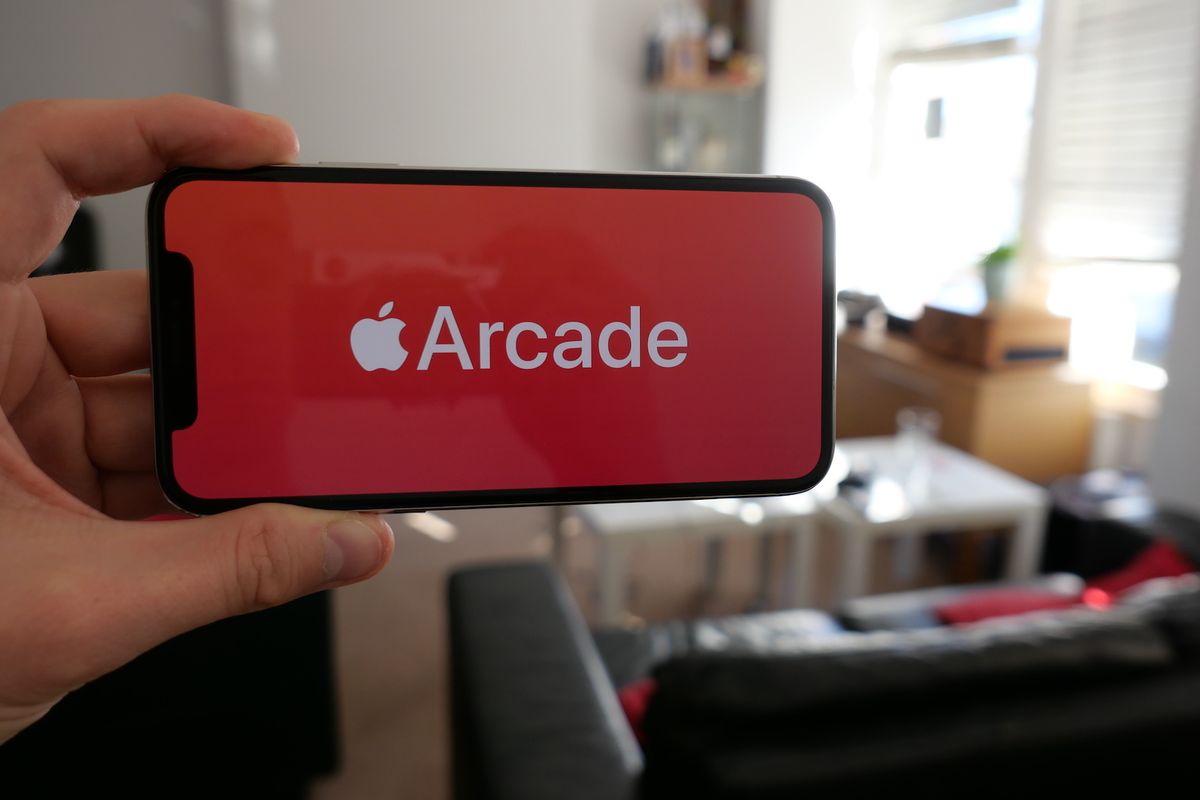Gaming (VR)

GearBrain
Apple Arcade will make you fall in love with mobile gaming again
A large (and growing) catalogue of quality games with no in-app purchases, for $4.99 a month.

A large (and growing) catalogue of quality games with no in-app purchases, for $4.99 a month.
Apple Arcade launches this week, coming to devices running the iOS 13 beta today, September 17, and to everyone else two days later.
The new subscription service begins with a one-month free trial, followed by a monthly cost of $4.99. Apple Arcade works across the company's product portfolio, including on the iPhone, iPad, Mac, and Apple TV. There are approximately 50 games available now, and Apple promises over 100 by the end of winter.
Read More:
All games can be played online or offline (so they'll work just fine on the airplane), and they work cross-device, so you can play on your Mac, then switch to your iPhone and pick up where you left off.
Arguably the most important feature is the lack of micro-transactions, in-app purchases, adverts and buyable loot boxes. Instead, all of the games work like those bought on more traditional gaming platforms, like the Xbox One, PlayStation 4, and Nintendo Switch.
Not a 'Pay to Play' model
This marks an important shift in the mobile gaming landscape. Although not an avid gamer, I remember excitedly downloading Real Racing 3 for my iPhone back in 2013; the previous two installments have been excellent, and given the franchise was now published by Electronic Arts, I had high hopes for number three.

Instead, what arrived was one of the first 'freemium' or 'pay-to-play' mobile games. Just as iPhones and Android smartphones had reached a point where they could play graphically intense games of comparable quality to those from just a generation ago, the industry had decided to take a different path. Instead of charging $5 or even $10 for the game, they gave it out for free, but made it almost impossible to play without paying repeatedly to make progress. Real Racing 3 was one of the first to do this, but it was far from alone.
At its simplest, small transactions meant cars could be fixed or delivered to your garage more quickly; otherwise, you had to wait an hour, which was not ideal. Naturally, paying out a few cents to keep playing was always a temptation, especially to console gamers used to playing for hours on end without tedious waiting. The industry evolved over the next six years, but even in 2019, it is still commonplace to see free mobile games littered with adverts that interrupt gameplay or with games demanding payment to make unimpeded progress.
Loot boxes also became a problem, where gamers are asked to pay to unlock a mystery selection of in-game items. Some of these items are perceived as carrying more value than others, turning the paying for a loot box into a lottery. Young gamers using a smartphone with a billing account linked to their parents' credit card then racked up bills in a bid to unlock rare in-game content.
This month, British members of parliament called on the government to classify paid-for loot boxes as gambling — a move which would follow similar steps already taken in China, Belgium and the Netherlands. Instead of obtaining a gambling license, video game companies operating in Belgium are no longer required to charge money for loot boxes.

How Apple Arcade differs
Now, there's Apple Arcade. Already known for its family-friendly, squeaky-clean image, Apple is likely to have already held a dim view on paid-for loot boxes, or gaming mechanics that lure children into addiction.
Instead, Apple Arcade charges a flat rate of $4.99 for blanket access to every game the service has to offer, and a family of six can play for that price too, provided their devices are linked through Apple's existing Family Sharing system. In one hit, this removes parents' worries of children seeing inappropriate adverts on free games or using their credit card in freemium titles.
Having played some of its titles this week, Apple Arcade feels like a return to mobile gaming before Real Racing 3, but with today's graphical capabilities.
Of the 10 titles I have played so far, all look beautiful and play with a high-caliber slickness that quickly turns the iPhone or iPad into a Nintendo Switch rival. We're not talking Xbox or PlayStation graphics, of course, but that's not what Apple is aiming for. Instead, titles like Oceanhorn 2 and Projection stay inside their technological comfort zone, but excel within it.
Apple Arcade games are accessed from a new tab within the iOS App Store, and your existing Apple Game Center ID is automatically used to log into every title. Because you are logged into every game you play, it's easy to stop playing on one device, then carry on on another. I switched between my iPad Pro and iPhone X with ease.
Controllers work too
Many Apple Arcade launch titles also support Xbox One and PlayStation 4 controllers over Bluetooth. This might be overkill with an iPhone on your commute, but with an iPad propped up in a keyboard dock, using a proper controller makes a lot of sense. Titles like Oceanhorn 2 feel 'proper' in a way I've not experienced with mobile gaming before; Xbox controller support felt integral to the gameplay instead of a half-baked afterthought.

Audio is also a delight in the games I've played so far (except perhaps the annoyingly repetitive sounds of Frogger in Toy Town). Played with headphones on, games like Agent Intercept and Overland feel like real games worth sinking time into, not just Angry Birds-style, two-minute time-wasters.
Of course, if all you want are time-wasters to kill two minutes waiting for the bus, the App Store is rammed full of titles to play without paying $5 a month for Apple Arcade. But if you want to take things a step further, I reckon the $5 outlay will soon be forgotten about by many gamers who want more, but aren't into multi-hour sessions on a PlayStation, Xbox or gaming PC.
You could argue that Apple is aiming to rival those three by offering Arcade on the Apple TV and Mac, but for now, the games are a tier or two below the AAA titles those consoles are famous for. Instead, I think the Nintendo Switch is a worthy target, given that Apple gamers can also play on the go and in any room at home, too.
Most importantly, the Apple Arcade feels like a breath of fresh air. Players are automatically signed into every title using their Game Center credentials, with no need to create an account with any game.
You simply download the game, then start playing; the speed here is key for mobile gaming, when you might only have a few minutes to play between subway stops. Being able to play a game on your commute with an iPhone and then continue at home on a Mac or Apple TV is a great bonus for anyone already in the Apple ecosystem.
Speaking as a casual gamer whose Xbox is almost exclusively used for Forza Motorsport, Blu-rays and collecting dust, I believe Apple Arcade has made a great start right out of the gates. Apple isn't aiming this at hardcore console or PC gamers, but instead offers a carefully curated selection of high-quality games that bridge the gap between casual iPhone gamers and those who want to explore the next generation of gaming, without purchasing a console.
With 100 titles available this fall, there should be plenty to get stuck into for now. The challenge, as with any subscription service, will be to keep the catalogue regularly updated with new titles to prevent subscribers from canceling. If Apple can manage this, then I believe a significant portion of today's billion-plus iPhone owners will pay $60 a year — even if it's just a convenient way to avoid free games littered with intrusive ads and loot boxes.
GearBrain Compatibility Find Engine
A pioneering recommendation platform where you can research,
discover, buy, and learn how to connect and optimize smart devices.
Join our community! Ask and answer questions about smart devices and save yours in My Gear.
